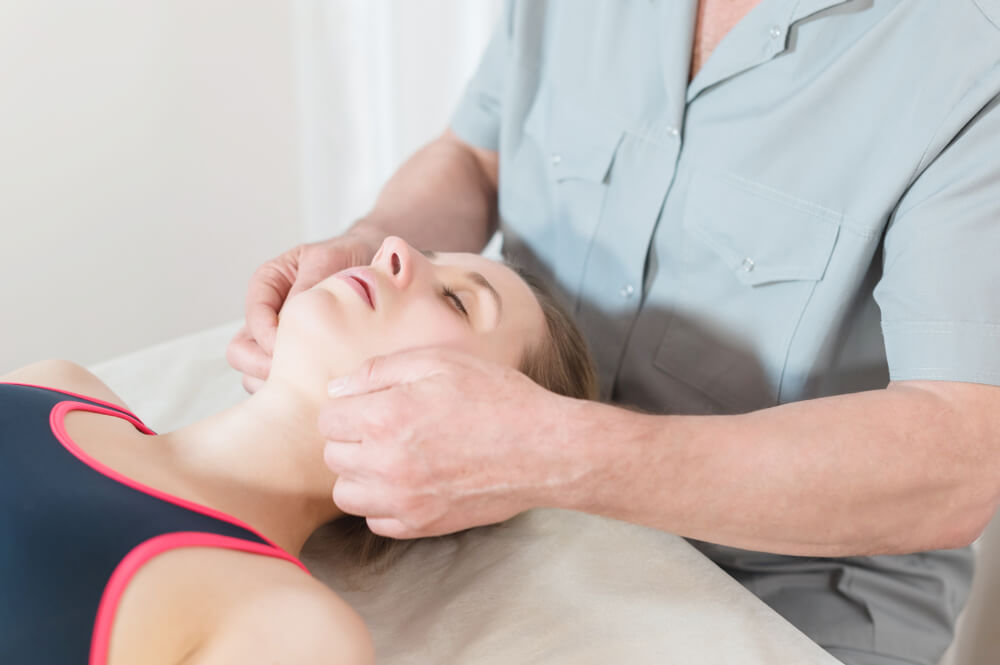When most people have pain when chewing or yawning, they might think they have a problem with a tooth. However, the pain you feel could actually be coming from one of your temporomandibular joints (TMJs). Treating issues with this joint in Plainwell, Michigan, often takes a three-way partnership between you, your dentist and a physical therapist. There are two physical therapy techniques in particular that can help with TMJ dysfunction treatment, but before we talk about them, let’s take a closer look at what TMJ dysfunction is.
What is TMJ dysfunction?
The TMJs are the hinges at the back of your lower jaw. These joints are some of the most interesting in the body because of their range of motion. Not only can they move up and down like a hinge, but these joints can also slide back and forth too. This unique range of motion allows you to chew, yawn and do other normal daily activities.
However, as amazing as they are, the TMJs can also become painful. For one thing, arthritis can develop in this joint as you age, and injuries to the jaw can also lead to pain in this joint. In addition, jaw misalignment and even neck, shoulder and upper back issues can lead to TMJ dysfunction.
Two physical therapy methods that can help treat TMJ dysfunction
People who have TMJ dysfunction in Plainwell will often need treatment from a physical therapist. These medical professionals can help create an individualized treatment plan for TMJ pain, and there are two methods of therapy that are typically a part of these treatment plans.
1. Myofascial release
Fascia is a sheathlike form of soft tissue, and it can be found throughout the body. When you’re dealing with TMJ dysfunction, areas of tension, or trigger points, in the fascia could be the root cause of this condition. This is possible because fascia-based trigger points restrict the movement of muscles and tendons below them, and the soft tissue restriction can lead to decreased TMJ range of motion and pain.
Myofascial release is a specific set of hands-on movements designed to relieve the tension in trigger points. This allows the soft tissues near the trigger point to move freely again. It can also help reduce TMJ dysfunction pain and restore normal movement to the joint.
2. Joint mobilization
Another therapy technique often used to treat TMJ dysfunction is joint mobilization. This method is a type of manual, or hands-on, therapy like myofascial release. However, the focus of this technique is on the muscles rather than the fascia. Using their hands, a therapist will knead and stretch the muscles to stretch them. The movements are also intended to relieve tension and break down scar tissue. By accomplishing these goals, joint mobilization can help realign the TMJ and decrease your joint pain.
Find effective TMJ dysfunction treatment in Plainwell, MI, at Armor Physical Therapy
Armor Physical Therapy is proud to offer TMJ dysfunction treatment at our Plainwell clinic. Our team is ready to build a personalized treatment plan that can help you get benefits like:
- Reduced pain
- Improved joint mobility
- Realigned TMJ joints
- Increased ability to do normal daily tasks
Contact us today for more information or to schedule an initial appointment if you need TMJ dysfunction treatment.


